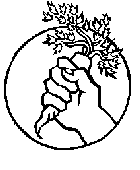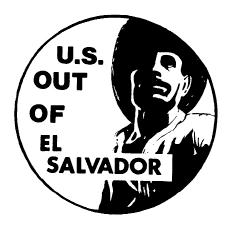
| Contents | Start | Previous | Next |
We looked across the desert to our friends outside the fence, and they were throwing food to us from this incredible distance. Then, spontaneously, a person from the crowd high-jumped over the fence and came running toward the cage. With the Wackenhuts in hot pursuit, this mysterious person ran up to the cage and climbed into our prison before the Wackenhuts could grab him. On his back was a bag of food for us. While we ate and waited for the sheriff's department to take us to Beatty for booking, we told the story about another time the police had tried to stop us from feeding people, during our protests outside the World Series at Fenway Park, in Kenmore Square, Boston.
* * *
The victories of the Boston Red Sox looked like they might be a big
loss for the poor and the homeless of Kenmore Square. The local business
association was seeing dollar signs with each Red Sox win. The "bums, punks,
and other undesirables" would have to be cleared from the square if business
was to succeed. The business association, on the advice of the Boston police,
sent out a newsletter demanding that merchants lock their dumpsters; turn
in those businesses that did not; post signs asking customers not to give
money to beggars; and report all sightings of undesirables, punks, and
bums to the police. They were encouraged to make notes of the time and
location of each incident, and,
if possible, get a photo to include with their notes to the police. In
a few days, the cops were telling the homeless to leave town or face arrest.
We wrote a letter of protest to the business association, the police, and
the newspapers pointing out that homeless people had the same rights as
everyone else and this discrimination was leading down a dangerous road.
Who would be the
and,
if possible, get a photo to include with their notes to the police. In
a few days, the cops were telling the homeless to leave town or face arrest.
We wrote a letter of protest to the business association, the police, and
the newspapers pointing out that homeless people had the same rights as
everyone else and this discrimination was leading down a dangerous road.
Who would be the
next victim of this kind of fascist logic? Food Not Bombs started sponsoring
"welcome to Kenmore" meetings with free food in the park with the idea
of introducing the business people to the homeless people who lived beneath
the overpass, inside the doorways, and in the back alleys of Kenmore Square.
The press came, the homeless came, but, of course, the business association
members did not. After several very visible demonstrations and embarrassing
press coverage that exposed their illegal intentions, the business association
withdrew the newsletter and quietly dropped the issue. From most reports,
the only increase of robbery in Kenmore Square during this time came from
the businesses that jacked up their prices to cash in on the World Series.
* * *
They did not drop the issue in Nevada. Ultimately, we were all taken
to the town of Tonopah in the sheriffs buses and booked there. This was
a three-hour drive from the main gate, one way! With the hundreds of arrestees
and hundreds more supporters arriving to retrieve them, we overran this
small town out in the middle of the desert. There were so many of us, we
completely consumed all the food at one restaurant. The people working
there that night could not recall ever seeing a line at the door, not even
on New Year's Eve, their traditional biggest night of the year. We broke
the record for their busiest night ever. It was like one big parry all
over town for several hours, without any incidents. Finally, after everyone
was released from the school gym where the booking took place and almost
everyone had a hot meal or cold drink, we managed to find rides for all
and headed back to Peace Camp.
By the summer of 1988, there were Food Not Bombs groups operating in
Boston, San Francisco, and Washington, D.C., but the event that actually
catapulted Food Not Bombs into the national, and even international, spotlight
was the Labor Day arrests in Golden Gate Park. The following stories are
about the four weeks preceding Labor Day, during which Food Not Bombs volunteers
had been repeatedly arrested for feeding the homeless.
| Contents | Start | Previous | Next |